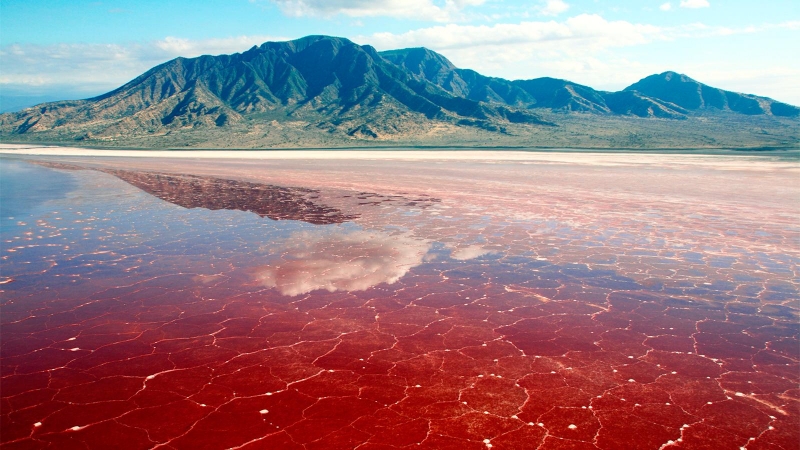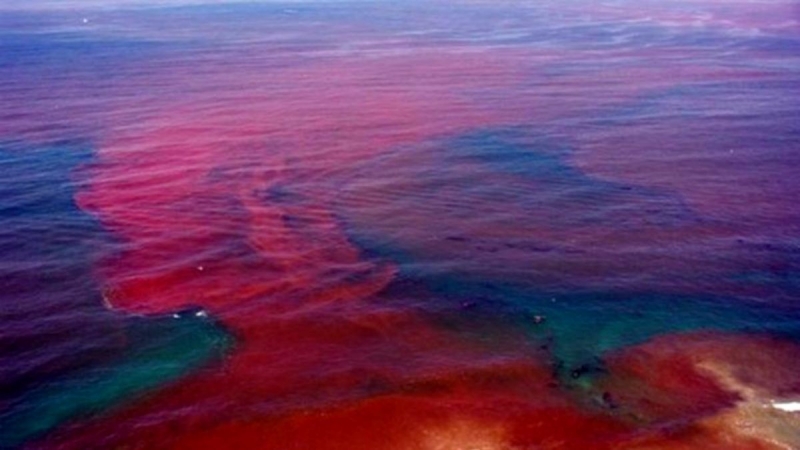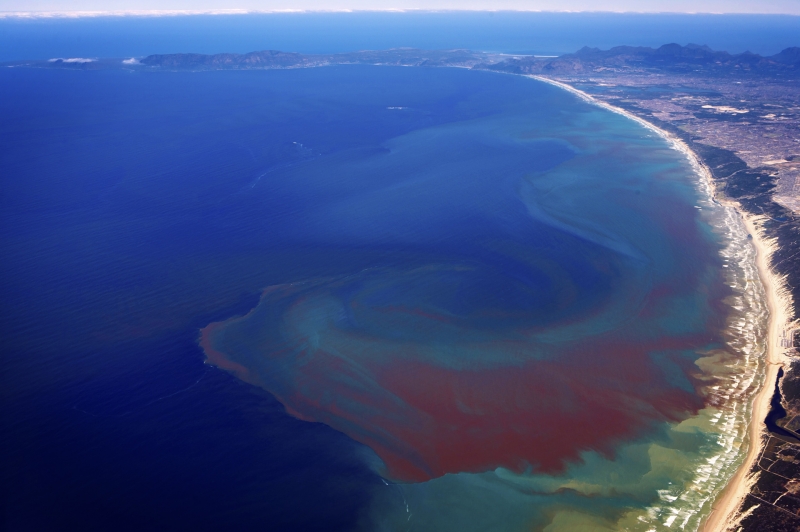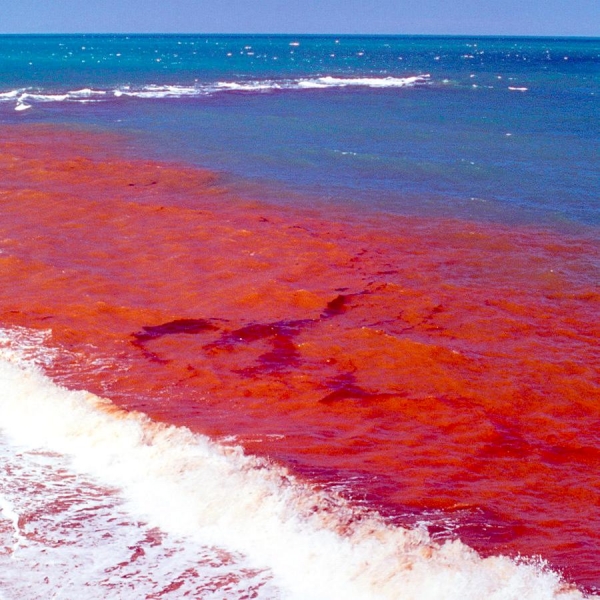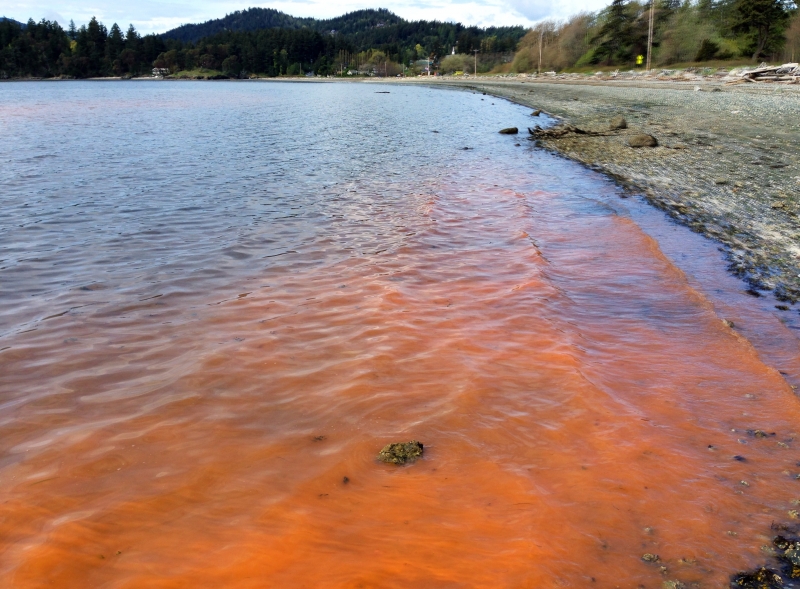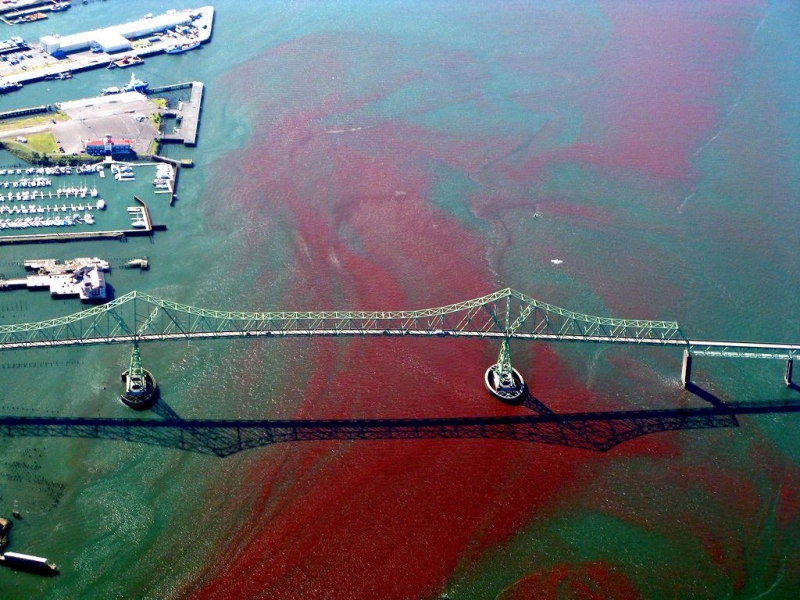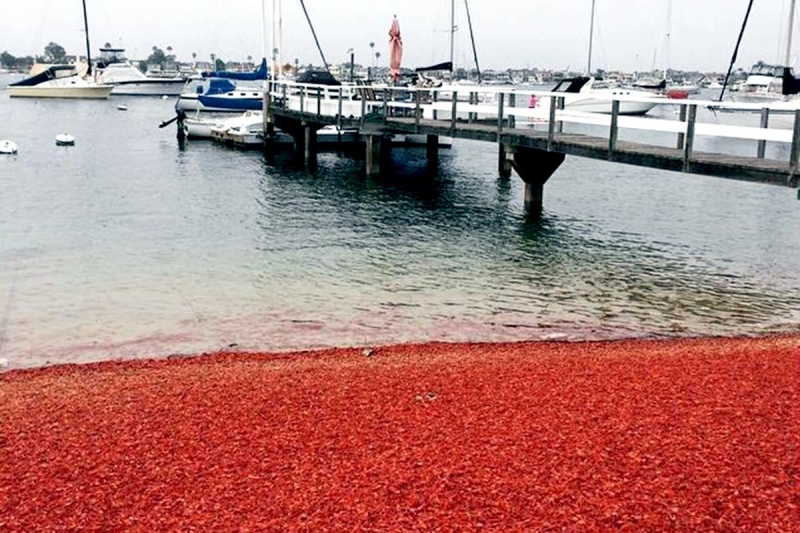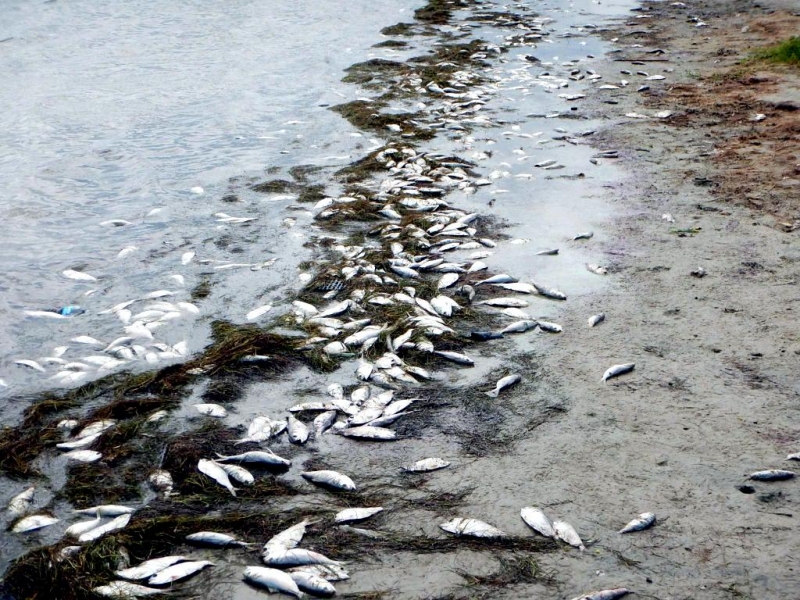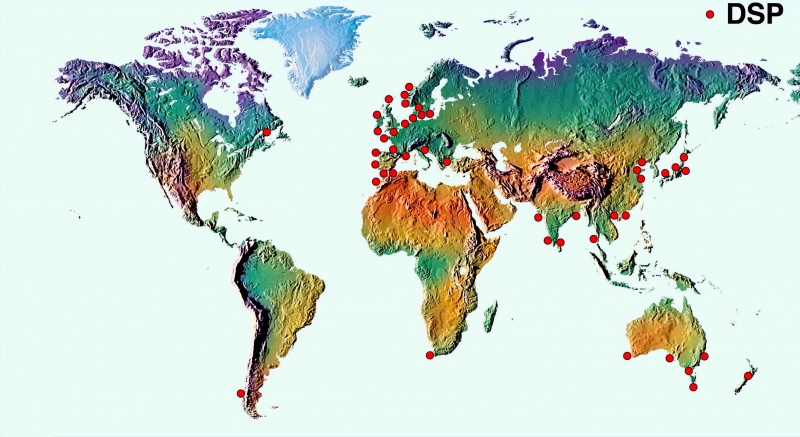Red Tide – A Harmful Algal Bloom
Saltwater and freshwater teem with life, much of it microscopic and most of it harmless, in fact it is this microscopic life on which all aquatic life ultimately depends for food. While most of these species of phytoplankton & cyanobacteria are harmless, there are a few dozen that create potent toxins given the right conditions. Red Tide also known as Harmful Algal Blooms (HAB) may cause harm through the production of toxins or by their accumulated biomass, which can affect co-occurring organisms and alter food-web dynamics. Impacts include human illness & mortality following consumption of or indirect exposure to HAB toxins, substantial economic losses to coastal communities and commercial fisheries and HAB-associated fish, bird and mammal moralities. To the human eye, blooms can appear greenish, brown and even reddish-orange depending upon the algal species, the aquatic ecosystem and the concentration of the organisms. Harmful algal blooms or HABs, occur when colonies of algae (simple plants that live in saltwater and/or freshwater) grow out of control while producing toxic or harmful effects on people, fish, shellfish, marine mammals & birds. The human illnesses caused by HABs though rare, can be debilitating or even fatal.
While most people call these blooms “Red Tides”, scientists prefer the term “harmful algal bloom”. One of the best known HABs in the nation occurs nearly every summer along Florida’s Gulf Coast. This bloom like many HABs, is caused by microscopic algae that produce toxins that kill fish and make shellfish dangerous to eat. The toxins may also make the surrounding air difficult to breathe. As the name suggests, the bloom of algae often turns the water red. HABs have been reported in every U.S. coastal state and their occurrence may be on the rise. HABs are a national concern because they affect not only the health of people & marine ecosystems, but also the health of local and regional economies. Not all algal blooms are harmful however. Most blooms in fact, are beneficial because the tiny plants are food for animals in the ocean. In fact, they are the major source of energy that fuels the ocean food web. A small percentage of algae however, produce powerful toxins that can kill fish, shellfish, mammals & birds and may directly or indirectly cause illness in people. HABs also include blooms of non-toxic species that have harmful effects on marine ecosystems. For example, when masses of algae die & decompose, the decaying process can deplete oxygen in the water causing the water to become so low in oxygen that animals either leave the area or die.









